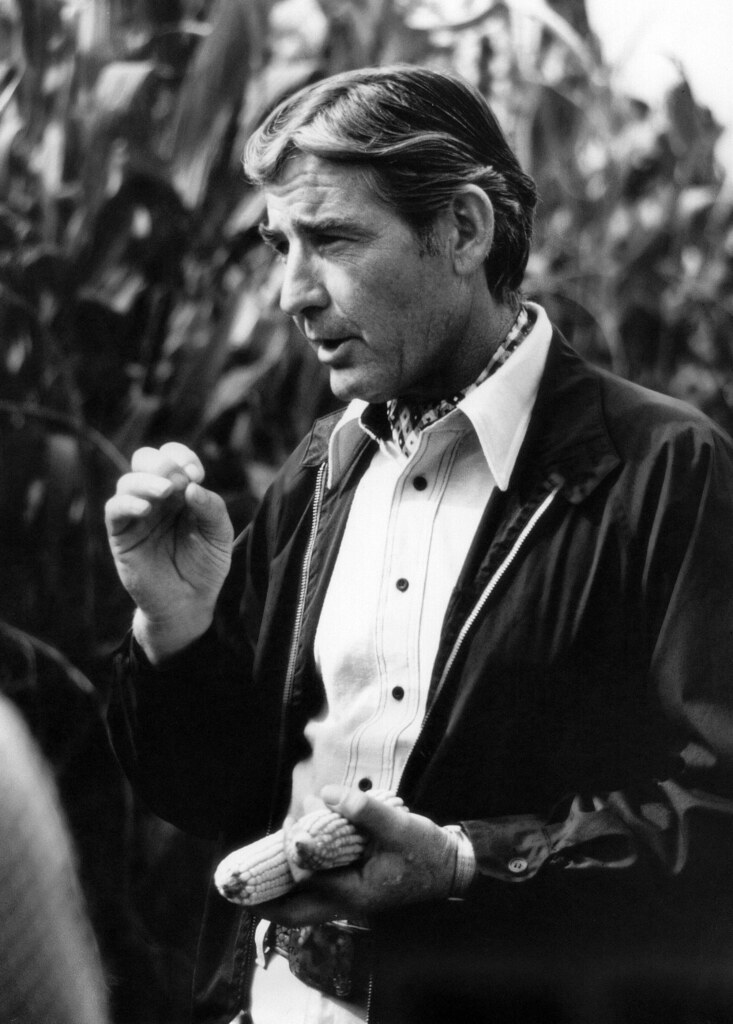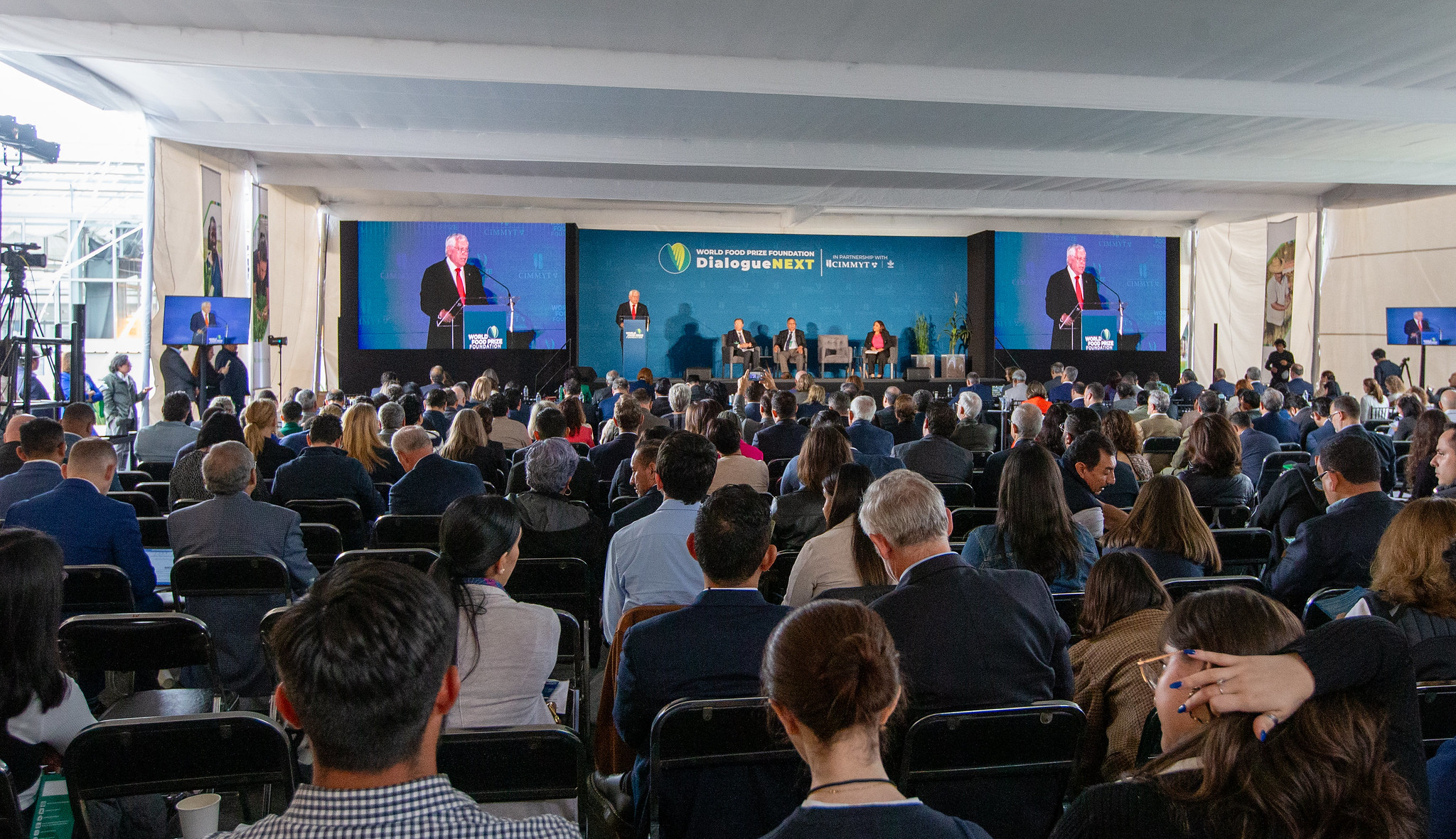
Architect of CIMMYT maize research during the 1970s, Ernest W. Sprague pulled together a coherent global program from diverse regional and country initiatives in Latin America, Asia, and eastern Africa, building partnerships with national maize research programs to serve smallholder farmers.
On 25 February, Ernest W. Sprague, who served as Maize Program Director at CIMMYT from 1970 to 1983, passed away at the age of 100.
Sprague led the development and adoption of systematic approaches for breeding improved maize populations adapted to the tropics and subtropics, including the international testing of varieties and crosses at scale.
After leading the Inter-Asian Corn Program established by the Rockefeller Foundation in Thailand in 1966, Sprague joined CIMMYT, where he vigorously championed the role of open-pollinated maize varieties (OPVs) for smallholder farmers in rain-fed maize cropping areas. These farmers often faced diseases, pests, and drought and lacked access to or could not afford hybrid seed or large quantities of fertilizer.
OPVs generally yield less grain than maize hybrids but are often preferred by smallholders for their suitability in local foods. They can also be grown by saving and sowing seed from previous harvests without sacrificing yield or other qualities—a problem that arises when grain harvested from hybrids is replanted.
In Thailand, Sprague had witnessed a thriving maize sector powered by the widespread adoption of an improved OPV known as “Suwan 1.” Conversely, he believed that hybrid seed systems designed to serve small-scale farmers were lagging in many other countries where CIMMYT worked.
“From the late 1980s, CIMMYT has worked successfully to develop and share hundreds of maize inbred lines—parents for high-yielding hybrids that feature farmer-preferred traits—as well as supporting and partnering with competitive private seed sector companies that truly benefit smallholder maize farmers,” said Bram Govaerts, CIMMYT Director General. “Still, population improvement in the OPV breeding program under Sprague’s leadership clearly contributed to the success of CIMMYT’s hybrid research by increasing the average performance of lines extracted from those populations.”
In addition, much of CIMMYT’s research on hybrid breeding for tropical maize in the 1980s and 1990s was led by Surinder K. Vasal, an Indian maize scientist brought to CIMMYT by Sprague.
Vasal’s pre-biotech research, together with CIMMYT cereal chemist Evangelina Villegas, led to the development of quality protein maize (QPM), whose grain contains enhanced levels of two amino acids essential for human protein synthesis. This groundbreaking work—initiated by Sprague—was recognized with their joint reception of the 2000 World Food Prize.
Building up partners and partnerships
Sprague was a strong proponent of in-service training at CIMMYT headquarters in Mexico for young researchers from partner countries. These courses were formally organized and scaled up in the early 1970s as a major component of CIMMYT’s maize program. Participants worked for several months within the main breeding or production programs, usually in the lowland tropics of Mexico, gaining hands-on skills in the field through activities such as laying out on-farm trials, selecting germplasm, making crosses, and evaluating results. By 1982, the program had graduated 650 maize scientists from 61 countries. Many alumni rose to influential positions in national programs or the private sector, thereby strengthening regional cooperative maize research networks.
“Ernie was my boss when I first arrived as a postdoc to CIMMYT in 1976, and I was always amazed at his commitment to high-quality field work,” said Greg Edmeades, a maize physiologist whose research accomplishments included methods to select for drought tolerance in maize. “I will always remember Ernie as a friend and a great supporter of the task we faced in Ghana, where I worked as a maize agronomist and lived with my family during 1979–84. He thought often of the challenges that we as a family faced with frequent water and power cuts and generously provided support. I was always amazed at his stamina and his capacity to survive and keep fit and well on black coffee alone in the mornings and no major meal until evening.
“Sprague’s contributions to CIMMYT were significant. The setting up of the international testing system was his baby and a masterpiece in getting CIMMYT germplasm out to national programs. He elevated the status of national programs in all sorts of ways, not the least of which was training.”
The CIMMYT global community joins in remembering Ernie Sprague and extends heartfelt condolences to his family.

 Climate adaptation and mitigation
Climate adaptation and mitigation 
